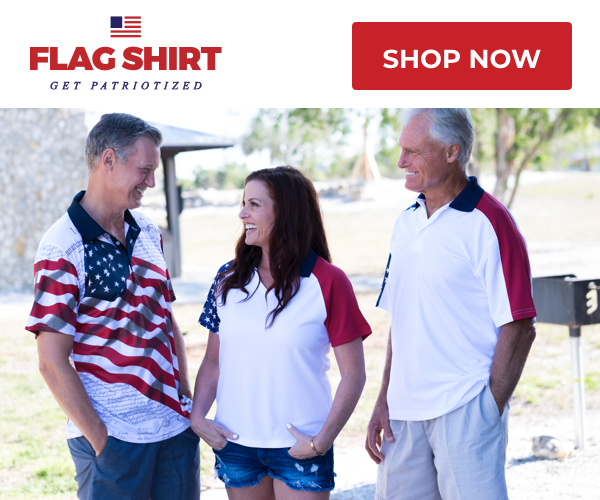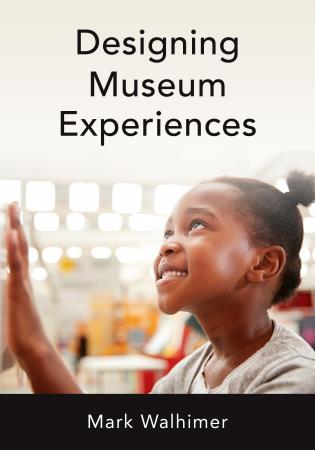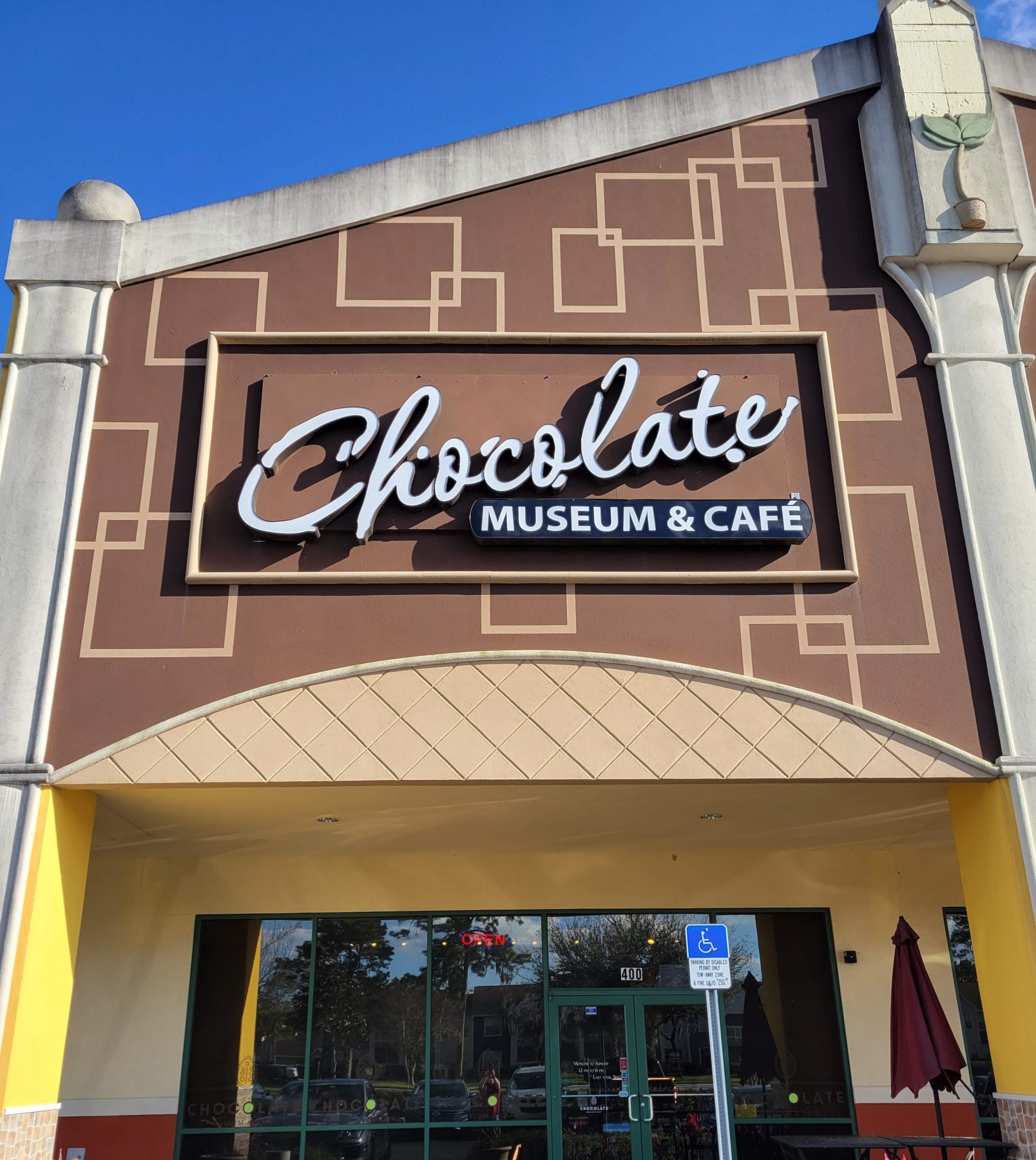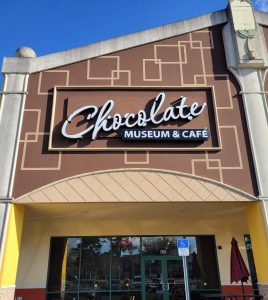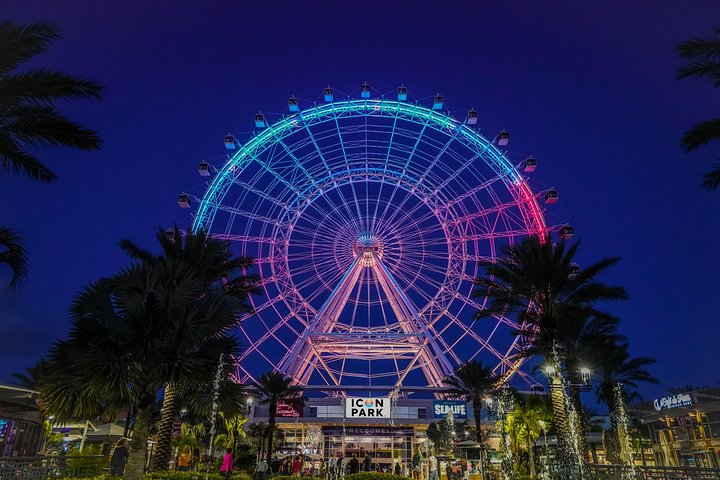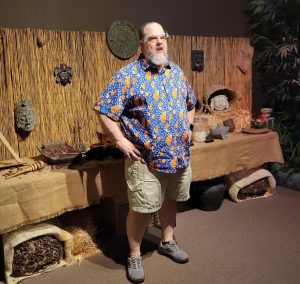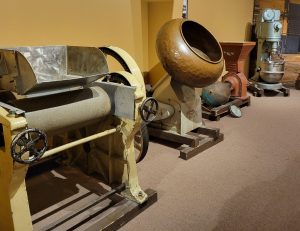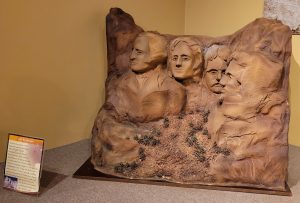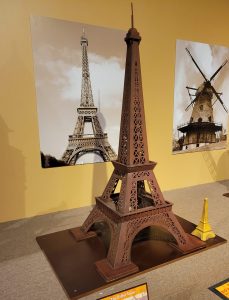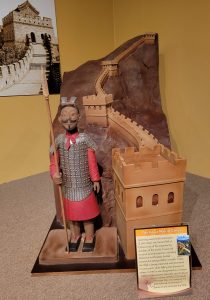30 Best Things to do in Daytona Beach Florida
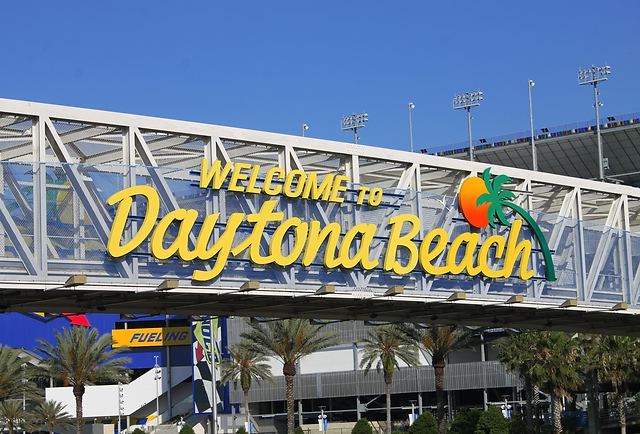
Thank you for reading. Here you will find the 30 Best Things to do in Daytona Beach, Florida. Whether you are a visitor, a local, or a day tripper, there are many things that the entire family will enjoy. There are no chain locations or food listings. This list is meant to promote locally based attractions and shops. These are places you won’t find in every community or tourist destination. So jump in, and review the 30 best things to do in Daytona Beach, Florida.

DAYTONA BEACH
Known as the World’s Most Famous Beach or the home to the World Center of Racing, Daytona Beach has often staked its reputation and future on these two industries. The beach and the speedway are two things that are not going anywhere. They are the rock on which Daytona’s tourism future still stands. Daytona Beach is much more than the beach and NASCAR however. In fact, here are the 30 best things to do in Daytona Beach, Florida.
Yes, there is bike week and Biketoberfest. But, in speaking with longtime observers these events aren’t quite what they used to be. Sure, they bring people to town but the fact is, this is an aging market. It’s a market that has moved outward. This includes as Destination Daytona in Ormond Beach rather than the older hangouts in Daytona. Other cities within easy driving distance are also siphoning off visitors. In addition, bike events are held around the country. It’s not the novelty it used to be. Almost every tourist mecca has these events so Daytona doesn’t have the uniqueness it did many years ago. Bike Week isn’t going anywhere but I am not sure Daytona Beach should stake its name on the event.
Events come and go. Take spring break. Compared to the heydays’, spring break is almost a non-event today. Black College Reunion? The same thing. Today, in addition to the pop-up truck and jeep events that nobody in town other than hoteliers is interested in, the Welcome to Rockville, multi-day heavy metal concert is one of the biggest annual events. Of course, promoters can take their ball and go home any time they feel unloved or that they can get something better out of another town. I don’t foresee this being an event Daytona will hold on to long term without committing public funds. Local businesses seem to love this event and many claim it is their most profitable special event during the year.
A concern many event attenders voice about Daytona are accommodations. Many buildings have been damaged by hurricanes and have not reopened. Those that are in business are charging what these visitors consider exorbitant rates. It’s not my place to say whether that’s true or not but visitor actions speak loudly.
And while Daytona Beach often has an identity problem, compounded by multiple groups trying to promote and support tourism, don’t be scared away by the revolving door of publicity campaigns or the negativity about some of the seedier areas of the community. Pay attention to your surroundings, use common sense, and just like in any other city, you’ll be fine and have a good time.
TRAFFIC
Daytona Beach can run the gamut on traffic congestion.
I have been beach side when there is very little traffic. Mind you, that is during off season and during the work week. International Speedway Boulevard from say, Clyde Morris Boulevard to Beach Street is usually pretty busy no matter the time of year. In the vicinity you have a large high school and two colleges, in addition to ISB being a major thoroughfare to beach side. Congestion is inevitable.
During peak season, say March through August/September back to school, weekend driving can be pretty harsh in spots. If you are coming to town during one of the weeks there are races at the speedway, be prepared for major headaches on International Speedway Boulevard and the highways that funnel onto the road. Pay close attention to any of the temporary electronic billboards on the side of the road and keep an eye out for pedestrians, who often don’t think crosswalks apply to them.
During bike week events in March and October, be on the lookout. Traffic can be busy, especially near the Main Street and Destination Daytona areas. Bikers are notorious for riding in wide and deep packs with many not paying attention to larger vehicles. Bikers weaving in an out of traffic is common and making extra lanes is commonplace.
Spring break and certain truck, jeep, and other pop-up events, sanctioned and unsanctioned, can tie up beach side traffic to a point it is at a stop. Many of these people see a need to cruise slowly up and down A1A, causing gridlock on the narrow and heavily stop lighted A1A.
Summer traffic during the weekends can be heavy as the beach is a popular, low-cost way for people to spend the day. Beach entrances are limited and it just takes time to get cars through the toll booths. Just be patient or scout ahead and find some of the off-beach parking lots.
While we are on the topic of traffic, city leaders have a mind that there must always be some type of road construction going on. This is not usually fixing potholes and the like, but rather, some type of project meant to enhance the city image while usually tying up traffic for long periods and often not having the anticipated outcomes. Just shake your head and drive on. The project will be complete in two years when another will be started.
Google maps and a bit of patience are your friends and will get you around the Daytona Beach area.
WEATHER
The weather in Daytona Beach can be brutal during the summer months. Don’t let the online historical records tell you otherwise. Weather report numbers are recorded at Daytona Beach International Airport and may not be accurate throughout the area.
The NOAA states that from 1991 through 2020 the average high for the year is 80.6 with a low of 62.5. They claim the average high in July is 90.2 and in August is only 89.8. I strongly believe most locals would challenge these numbers as being too low. Daytona Beach is HOT, there is no way around it. Try shorts and t-shirts on Christmas many years hot.
When it comes to precipitation, be prepared, especially if visiting during late spring through the summer months. Violent thunderstorms can come on rapidly and if you are on the beach, lifeguards will be working to safely clear you out. Getting a packed beach safely cleared is an undertaking but the lifeguards to a fine job. The NOAA states Daytona Beach receives an average of 51.25 inches of rain and 119 rainy days per year.
A word on hurricanes and tropical storms. Don’t be the tough guy trying to brave out a storm beach side. If you are in town and there are evacuation notices issued, pay attention. If you are staying beach side, please remember that bridges are locked down after winds reach a sustained 40 mph. You won’t be able to change your mind and leave and EMS will probably not be able to reach you if something bad happens. It’s rare, but keep a watch on the weather if you are visiting during hurricane season.
Here’s a personal story about Daytona Beach weather. I have been to exactly one NASCAR race at DIS. When I worked in trade books, a couple of book reps were in town for February races and had extra tickets and very generously invited me to attend. This was the Saturday race so the grandstands were not full. We were wrapped in coats and freezing. The temperatures were kind of low and the wind was very strong through the grandstands. Despite the cold, the sun was so strong we all left with sunburned faces and necks.
WHAT TO SEE AND DO IN DAYTONA BEACH
So, you are thinking of visiting Daytona Beach. Maybe you are already in town on vacation and are looking for things to do. Well, here is a list of 30 best things do in Daytona Beach or local activities you should consider. I have provided hyperlinks to official websites or sites with considerable information. It is recommended you check these sites to confirm open hours and associated costs.
What you will not find on this listing are things such as shopping malls, bars, and restaurants. There may be these type activities associated with a few of the items listed but you can find a shopping mall on your own. Chain restaurants, which proliferate in Daytona Beach, can be found on almost any interstate exit. There is nothing unique or interesting about these places and their Daytona Beach franchises are no different. I strongly urge you to seek out local restaurants, bars, coffee shops, and stores. Daytona has a lot of unique opportunities for you to try.
A word about using this list before you start. Many of these locations begin with the name Daytona or Daytona Beach. It can be easy to overlook this part of the listing but you will not want to miss some of these places.
This listing is alphabetical and not in order of favorites or by category. This list includes locations from Ormond Beach to the north through Port Orange and Ponce Inlet to the south. .
Finally, this list is by no means all inclusive. What are some of your favorites that I have not included? Drop me a line or leave a comment. Do you own or work at a destination I didn’t include? Let me know. Maybe I will update it to 31 things to do. Did you not enjoy one of the places I have listed. Leave a constructive comment and I will approve it for posting.
Now, get to visiting!
Abraxas Books
256 S. Beach Street
Are you looking for that hard to find title, or maybe something to help pass the time while lying in the sun at the beach? With well over 100,000 titles in stock, Abraxas Books is the place to go.
For full disclosure, I have known Jim, the owner, professionally for well over twenty years. I have purchased hundreds of books from him. He know his books.
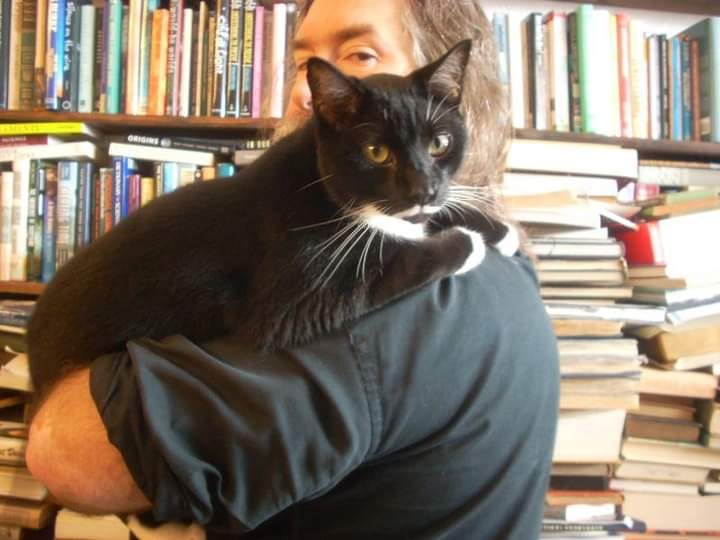
A few words of advice you should heed. Jim loves cats. He enjoys dogs, but cats are the way to go. You are not likely to find James Patterson, John Grisham, or other exceedingly popular mainstream fiction authors on the shelves but you may find them on the carts outside. If you are seeking history, art, photography, philosophy, religious history and theory, classic literature, etc. this is your place.
Do not ask for a discount. Seriously. If you are buying multiple books, I have never not seen Jim take care of a customer. Jim is a straight shooter, widely read, and like most book dealers, is a good judge of character. Jim may be intimidating to some, but I tell you from experience, he is a good person and an asset to Daytona Beach.
Angell & Phelps
154 S. Beach Street
Angell & Phelps has been handcrafting chocolates and other candies since 1925. Watch candy makers at work through large windows and purchase their wares to enjoy later. Free samples are provided.
A must visit if you are strolling along Beach Street. Stop in after visiting Abraxas Books and the Halifax Historical Museum or grab a snack before you see a film at Cinematique.
Beach
Most visitors to Daytona Beach come for THE BEACH. With over 23 miles of coastline and nearly 500 feet in width at low tide, much of it drivable, beach goers flock to The World’s Most Famous Beach. Please mind the 10 mph speed limit and watch for kids and those not paying attention. It is recommended to swim near staffed lifeguard stations as rip currents are common. These young men and women are well trained and will be able to assist if you are in danger.
It is illegal to disturb sea turtles, hatchlings, or nests. Seriously, if these are marked or you come across them, don’t press your luck. An additional point, don’t dig and leave holes on the beach. Sea turtles and hatchlings can easily become trapped in your hole. If you or your kids just have to dig, fill it in before leaving.
For beach pricing information please visit Volusia Beach Pass. Multiple options are available and off-site parking can often be found for no cost.
Birthplace of Speed Park
Corner of Granada and A1A in Ormond Beach
Relive the earliest days of beach racing and beach speed time trials The park includes monuments and a recreation of the Ormond Garage. The park is free to visit, and the beach is just a very short walk away. Park in the lot across A1A and walk over.
Calle Grande Arches
Calle Grande Street west of US-1 (Ridgewood Avenue) in Holly Hill
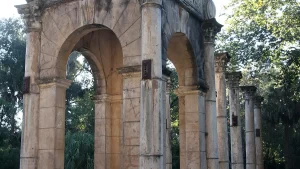
Dating to the mid-1920s, the remains of the Calle Grande Arches are a true site to behold.
William Collins Hardesty was the man behind a proposed development called Rio Vista on the Halifax. Plans called for cottages, a large hotel, a golf course, and a canal for gondola rides. Today, the Riviera Hotel remains from the original development, now as an assisted living facility. The golf course is part of the Riviera Country Club.
The still standing arches, which are located at what was to be the entrance to the grand project, are situated on the banks of a dirty canal. The detail put into these columns is incredible. Painted to look like marble they provide the feel of ancient Rome.
When visiting, please use extreme caution and park well off the road. Calle Grande Street is a known for drivers exceeding the speed limit. In the past, drivers have hit and damaged the columns. Visitors should pay attention to where they are walking when visiting the site. Take nothing but photos and do not touch the arches. The arches are not in the best of condition and can easily be damaged. Also, you don’t want to end up taking a header into the canal.
One final word of warning, I have been told that the homeless often congregate around this area. Deal with them at your own risk.
Casements
25 Riverside Drive in Ormond Beach
Located between the Halifax River and the Atlantic Ocean, the Casements was built in 1913 and was purchased in 1918 as the winter home of John D. Rockefeller.
The property was placed on the National Register of Historic Places in 1973. It was purchased by the city of Ormond Beach in 1974 with renovations completed in 1979.
The Casements is now a multi-use facility offering visitor tours, workshops, classes, and special event rentals. Be sure to see the Boy Scout and Hungarian folk exhibits located on the third floor. The annual Ormond Beach Celtic Festival is held close by.
On the grounds, be sure to seek out the small marker placed by the Society of American Travel Writers. Please read my post on this marker by using THIS LINK. There are also two identical two-sided state historic markers for The Casements.
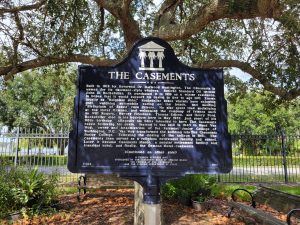
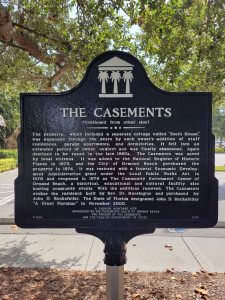
Cinematique
242 S. Beach Street
Founded in 1991, the 70-seat theater opened in 2010, providing an art house experience to visitors, showing first run independent, foreign, documentary, and art films that would not be available in Volusia County otherwise. This small theater fills a unique niche and has no comparable location in the county.
Ticket prices are around $10 per person. Limited food and drinks are available. Maybe stop in at Angell & Phelps for your movie snacks.
See the website for programming information and dates.
Daytona Beach International Speedway
1801 W. International Speedway Boulevard
First opened in 1959, the “World Center of Racing” annually hosts some of the largest stock car events in NASCAR, including the season opening Daytona 500. Motorcycle races, concerts, vintage car shows, and an incredible, drive through, Christmas lights display are just a few of the things you’ll find throughout the year at the Speedway.
The speedway isn’t about racing only, however. The facility offers guided tours, the NASCAR Racing Experience, an incredible museum, shopping, and more. The One Daytona shopping center is across International Speedway Boulevard.
Be sure to take the self-guided tour outside the facility, including monuments and the NASCAR equivalent of the Hollywood Walk of Fame. See how your hands measure up against some of the greatest drivers in the world.
Daytona Beach Zipline Adventure
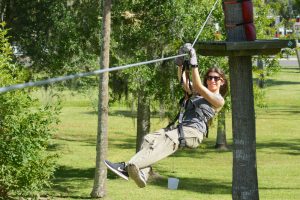
1000 Orange Avenue at Tuscawilla Park (be sure to take a stop at the World War I monument located close by.)
Two different courses are available allowing visitors to fit their schedule, ability, and budget to the attraction.
Test your skills on ladders, wooden bridges, tight rope cables, and zip lines.
Multiple pricing options are available. It’s about $55 to take both courses, plan on around 3 hours duration. Check their website for more information.
Daytona Ice Arena
2400 S. Ridgewood Avenue #63D in South Daytona
Who says there isn’t ice skating in Florida? The Tampa Bay Lightning have won two Stanley Cups in recent years and the Florida Panthers are a top hockey team also. Several minor league hockey teams call Florida home. Hockey is no longer a Canadian or northeast exclusive.
OK, so you aren’t ready for the NHL. How about a family friendly option instead? From public skating times, to skating and figure skating lessons, to hockey clinics, you can find it here in a clean and safe indoor environment.
Check the website for times and prices.
Daytona Lagoon
601 Earl Street, located beach side, adjacent to the Ocean Center and the large parking garage. Nearby you will also find the Tourist Church, referenced below.
Located just a block from the beach, Daytona Lagoon has something for every member of the family: thrill slides, pools, go-karts, laser tag, arcade games, mini golf, a sky maze rope course, and more.
The waterpark is of course the main attraction here. It features several fun slides including Kraken’s Revenge, the Shaka Halfpipe, Blackbeard’s Revenge, and more. There is a lazy river, a lagoon pool, and a children’s play area for younger visitors. Life jackets and lifeguards are on site.
The best parking is in the County of Volusia parking garage located adjacent to the park. Parking costs $8 but bring your garage ticket and they will validate your visit and you will pay only $4 to park. That’s a great deal and your car stays cool in the heat of the day.
Visit the website for multiple ticket pricing options.
Flea and Farmers Market
1425 Tomoka Farms Road
Open 9a-5p Friday, Saturday, and Sunday, this market, which opened in 1981, features over 1,000 booths and 600 vendors over many acres. From antiques to vegetables to cell phone cases to getting a tattoo, you can find it here. Parking, admission, and people watching are free.
For car enthusiasts, the first Saturday of the month features a Classic Car Cruise In.
Gnome Tree
1037 Riverside Drive in Holly Hill
Started in 2003 by a local couple, the original display of three gnomes at the base of a large oak tree has grown to several hundred gnomes who now “inhabit” the picturesque tree.
They even have a Facebook Page, The Gnomes of Holly Hill, Florida. Want more? There is a short, self published book available as well. Click THIS LINK to find it and purchase your own copy.
Halifax Historical Museum
252 S. Beach Street
Located in the County of Volusia owned, Merchants Bank Building, the Halifax Historical Museum is home to hundreds of items of local interest including artifacts, photos, souvenirs, and family mementos. The bank building, which is on the National Register of Historic Places, is a site to see on its own.
Located next to Abraxas Books (see above). Afterwards, stop in at Stavro’s Pizza House located just two doors from the museum.
Parking is free. Museum admission is $10 for adults, under age 12 are free. Closed Sunday and Monday.
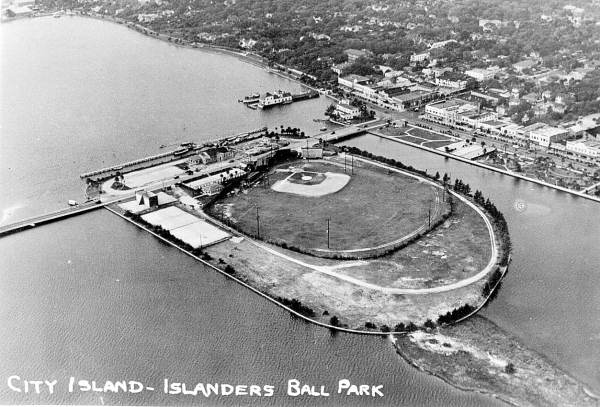
Jackie Robinson Ballpark
105 E. Orange Avenue
Originally opened in 1914 as City Island Ball Park, the present set up of field and seating dates to 1962. The field is currently home to the Bethune Cookman Wildcats baseball team and the Daytona Tortugas, the Cincinnati Reds low A farm team.
The ballpark is named after Hall of Fame player Jackie Robinson. It was in this stadium that he played his first spring training game in 1946. Stadiums in both Jacksonville and Sanford would not allow a mixed-race team to play on their fields and now Daytona Beach holds the honor of having hosted Robinson’s first game.
The ballpark was added to the National Register of Historic Places in 1998.
Learn about the history of Jackie Robinson Day and how it is celebrated in Major League Baseball at THIS LINK.
LPGA International
1000 Champions Drive
Golf lovers have a top-notch reason to visit Daytona Beach. The home course of the LPGA Tour, LPGA International features two, eighteen-hole courses designed by Arthur Hills and Rees Jones.
Also onsite are a three-hole practice course, chipping and putting areas, a driving range, Malcolm’s Bar and Grill, a pro shop, and member only facilities.
Visit the website to book a tee time or learn more about membership.
Looking to play golf around Volusia County? Take a look at my listing of golf courses in the county HERE.
Marine Science Center
100 Lighthouse Drive in Ponce Inlet
Not to be confused with the Marine Discovery Center in New Smyrna Beach, the Marine Science Center, which opened in 2002, is operated by the County of Volusia.
From their website, this remarkable project has allowed Volusia County to stand at the forefront of county government efforts to educate our public about the marine resources of our area and to rehabilitate and release sea turtles and seabirds.
The site includes a nature trail, boardwalk, multiple exhibits, a touch pool that features several types of marine life including rays, and Turtle Terrace, where visitors can witness turtle rehabilitation in process.
In its twenty years of operation the facility has cared for more than 20,000 sea turtles and more than 18,000 birds in addition to hosting more than one million visitors.
Be sure to visit the Ponce Inlet Lighthouse if you visit here (see below for lighthouse information.)
Closed on Monday. Adult admission is $8, seniors $7, children ages 3-12 are $5.
Mary McLeod Bethune House and Grave
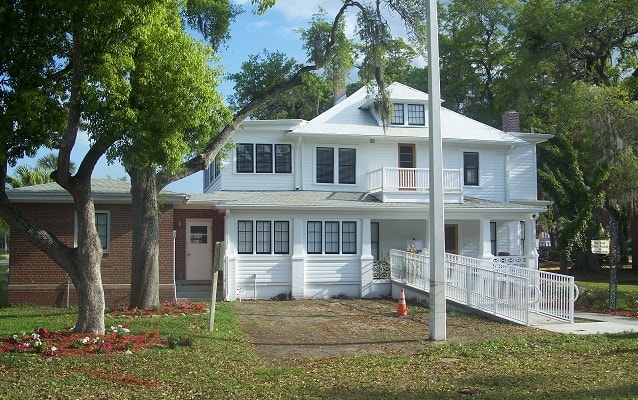
640 Dr. Mary McLeod Bethune Boulevard
The home was built in 1905 and purchased for Dr. Bethune in 1913 and served as her primary residence until her death in 1955.
The home appears to be temporarily closed for tours. When it reopens guided tours from Foundation employees and student workers are free, but donations are accepted. I took a tour a couple of years ago and the student giving the tour was knowledgeable, friendly, and quite accommodating to our group.
The home was dedicated as a National Historic Landmark in 1975.
Dr. Bethune is buried near the home on the campus of Bethune Cookman University.
This is certainly one of the underappreciated gems of Daytona Beach. Make the time to visit if it is open.
Museum of Arts and Sciences
352 S. Nova Road
MOAS features many permanent, rotating, and traveling exhibits.
The Charles and Linda Williams Children’s Museum is a favorite for families. Also, a family favorite are the Root Family Museum exhibits including Coca-Cola memorabilia, a train station including two mid-century cars, a collection of teddy bears, and more. Every child will want to see the thirteen-foot-tall giant ground sloth fossil in the Prehistory of Florida gallery.
For adults, the Cuban collection is world renowned. African tribal objects, arms and armor, the gallery of American art, decorative arts, and Chinese art are available. The planetarium will be a hit with both adults and children in your group.
The Cici and Hyatt Brown Museum of Art features perhaps the greatest collection of Florida art in the world. At more than 2,600 pieces the museum does a great job or rotating exhibits.
The museum is open seven days a week. A ticket combination package for MOAS and the Brown Museum is under $20 for adults. Separate pricing is available. A great bargain for art and history enthusiasts. This is without question one of the best museums in the state.
If you only have time for one activity, this is the one I recommend!
Ocean Center
101 N. Atlantic Avenue
The Ocean Center is located adjacent to Daytona Lagoon and Peabody Auditorium and only a couple blocks from the Tourist Church. There is a parking garage across the street. The Ocean Center has parking on site but there is sometimes a charge, particularly if events are going on.
Conveniently located directly across from the World’s Most Famous Beach, the Ocean Center features an arena that can hold 9,000 people, an exhibit hall with over 93,000 square feet of space, and multiple conference and breakout rooms.
I have included the Ocean Center because it features a large public art collection that may be viewed during open hours. Also on site is the ECHO Gallery, an area of rotating exhibits featuring the ECHO themes; environmental, cultural, heritage, outdoor.
Be sure to take a virtual tour on the facility website.
Ormond Memorial Art Museum & Gardens
78 E. Granada Boulevard in Ormond Beach
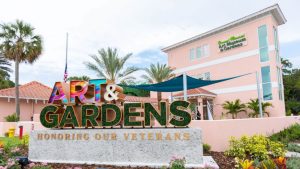
Just as World War II came to an end, one artist with a vision, and the people of Ormond Beach, worked together to create something magical.
Artist Malcolm Fraser offered a collection of his life’s work to any town along the east coast of Florida that would create an art museum that paid tribute to veterans. Ormond Beach and her residents rose to the occasion and worked together to create a living monument to creative freedom and equality of all persons, and to commemorate the service of World War I & II veterans who fought valiantly for that ideal.
Today, the newly remodeled and expanded museum offers permanent exhibits, traveling shows, virtual exhibits, and courses of all type.
The Gardens offer native and exotic plants and provide a perfect backdrop for weddings and other celebrations. While touring the Gardens be sure to seek out the military plaques and sculptures.
Open Monday through Friday 10a-4p and weekends noon to four. Admission is free but a $2 donation is recommended. This is one of the best values an art lover will find.
Pinewood Cemetery
Main Street across from the Boothill Saloon. The Boothill itself can be quite the destination if you are so inclined. As the saying goes, “Come on in and grab a seat. You’re better off here than across the street.”
Pinewood Cemetery, also known as Peninsula Cemetery, dates to the late 1880s, and contains the final resting spots for many of Daytona Beach’s earliest pioneers including names such as Day, Burgoyne, and Jackson. Military headstones indicate burials of men who fought in several different wars are interred her.
Cemetery hours look to be Monday through Saturday, 8 am-5 pm; closed on Sunday. The walk through the cemetery can be uneven so dress appropriately.
Polynesian Luau
Hawaiian Inn Beach Resort 2301 S. Atlantic Avenue in Daytona Beach Shores
An authentic interactive luau experience featuring hula dancing, flaming knife dancing, and more. Suitable for all ages. Includes an all you can eat tropical meal with dishes such as teriyaki chicken, kalua pork, Hawaiian pizza, multiple side dish options, Pepsi products, and a cash bar.
Current show times are at 6:00 p.m. on Tuesday through Saturday. Make your reservations through the website. Tickets look to be about $50 for adults.
Ponce Inlet Lighthouse
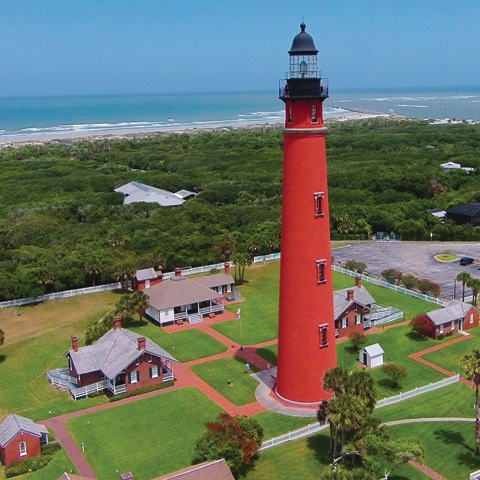
4931 S. Peninsula Drive in Ponce Inlet
Step back in time and climb 175 feet of fun in the Florida sun at the Ponce Inlet Light Station and Museum! Constructed in 1887, the Ponce de Leon Inlet Lighthouse has guided mariners along the Florida coast for more than 130 years.
Admission is about $7 for adults, with several discount programs available. Climb all 203 steps to the top if you dare. Remember, you have to come back down also. The views are worth it!
Be sure to visit the Marine Science Center if you are at the lighthouse. See the information above.
The lighthouse was declared a National Historic Landmark in 1998
Port Orange Sugar Mill
950 Old Sugar Mill Road in Port Orange
Also known as Dunlawton Sugar Mill Gardens, the property is operated by a not-for-profit corporation and owned by the County of Volusia. Entrance is free and donations are appreciated. Donations benefit the not-for-profit organization and help them with park upkeep.
The property contains dozens of gardens and plants, but the real star of the show is the remains of a 19th century sugar factory that were part of the Dunlawton Plantation. Multiple interpretive panels will guide you through the history of the land and the artifacts you will find onsite. Don’t be surprised if you see a dinosaur or two while you are on the park grounds!
You will often find volunteers onsite who can provide information on the plants and flowers.
Southeast Museum of Photography
1200 W. International Speedway Boulevard (on the Daytona State College campus)
One of several excellent art museums in the Daytona area, the Southeast Museum of Photography exhibits, collects, preserves, and interprets photography to facilitate teaching and learning at Daytona State College and enhances the community’s understanding of, and appreciation of culture, history, and photography.
Check the website for current exhibits, dates, times, and special events.
Streamline Hotel
140 S. Atlantic Avenue
Opened in 1940, this is the hotel where NASCAR was born! Once a dilapidated flophouse, the now fully renovated boutique hotel once served as local headquarters for the Women’s Auxiliary Corp during World War II.
Located directly across from the beach, the rooftop bar offers incredible views, or have dinner at the Victory Lane restaurant.
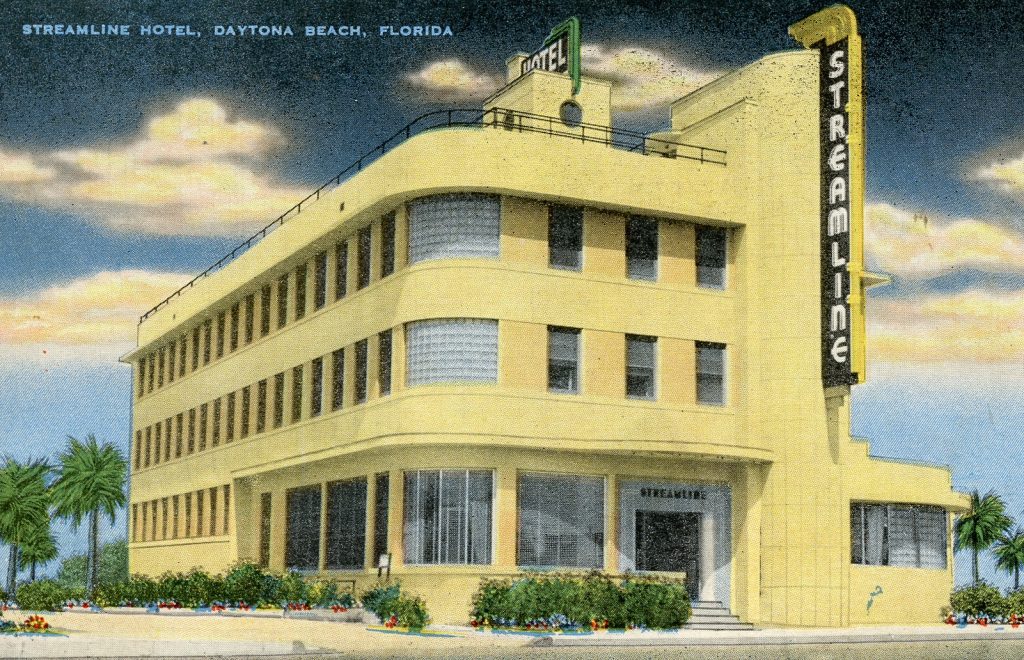
Timucua Indian Burial Mound
Corner of S. Beach Street and Mound Avenue in Ormond Beach
For information on the burial mound and the recent efforts to preserve this landmark, please see my blog post using THIS LINK.
Tomoka State Park
2099 N. Beach Street in Ormond Beach
Tomoka is a bird-watcher’s paradise, with over 160 species sighted, especially during the spring and fall migrations. Visitors can stroll a half-mile nature trail through a hardwood hammock that was once an indigo field for an 18th-century British landowner.
The park protects a variety of wildlife habitats and endangered species such as the West Indian manatee. For many visitors however, Chief Tomokie is a highlight of the park.
A boat ramp gives boaters and canoeists access to the river. The park store offers snacks, camping supplies, and canoe rentals.
For overnight stays, the park has full-facility campsites and youth camping.
Learn more about Chief Tomokie by reading my BLOG POST HERE.
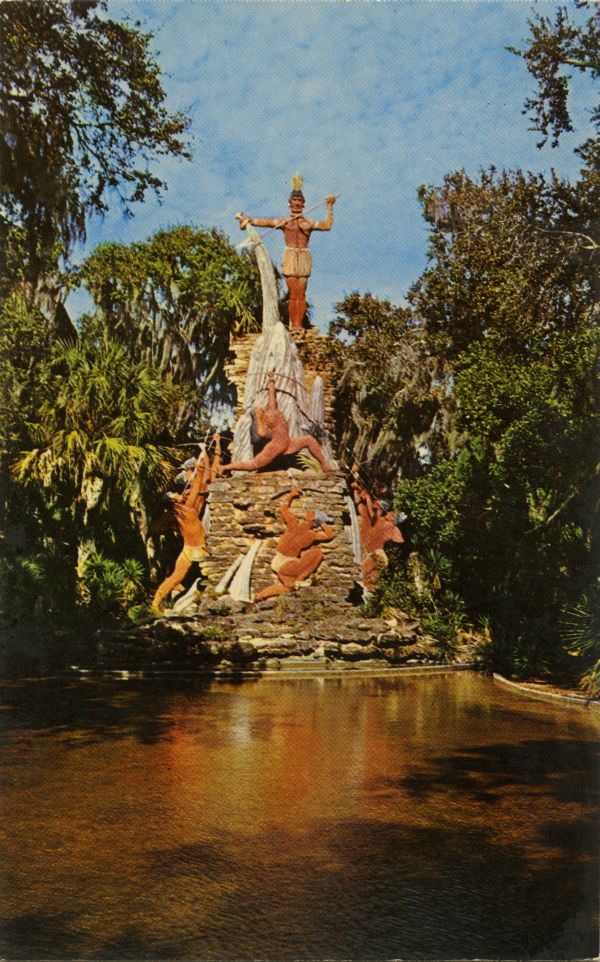
Tourist Church
501 N. Wild Olive Avenue
The Tourist Church, also known as the Seabreeze United Church of Christ and the First Congregational Church, is an historic church located at 501 North Wild Olive Avenue in Daytona Beach, Florida, United States. Built in 1929, it was designed by architect Harry Griffin in the Mission Revival Style of architecture. Today it is an active United Church of Christ congregation.
On October 6, 1995, it was added to the National Register of Historic Places.
You need to see this church to understand just how interesting it is. From the coquina to the stained glass. It’s worth the stop especially if you are visiting the Ocean Center or Daytona Lagoon. They are very close to each other.
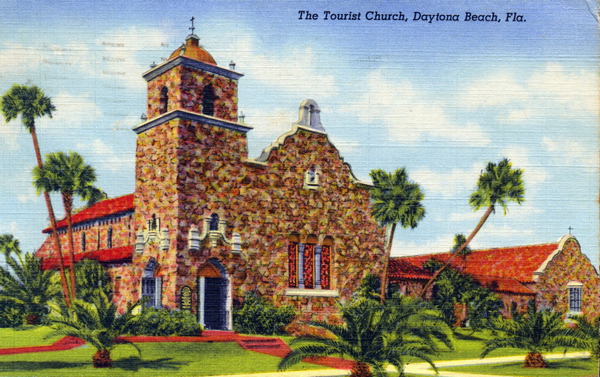
I hope you have enjoyed the 30 best things to do in Daytona Beach, Florida and that it makes your visit a memorable one. Please let me know of your favorites or places I should add.
This post may contain affiliate links. If you click these links and make a purchase, I may receive a small commission. This commission does not affect any price that you pay. All views and opinions provided are my own and are never influenced by affiliate programs or sponsors providing products.









